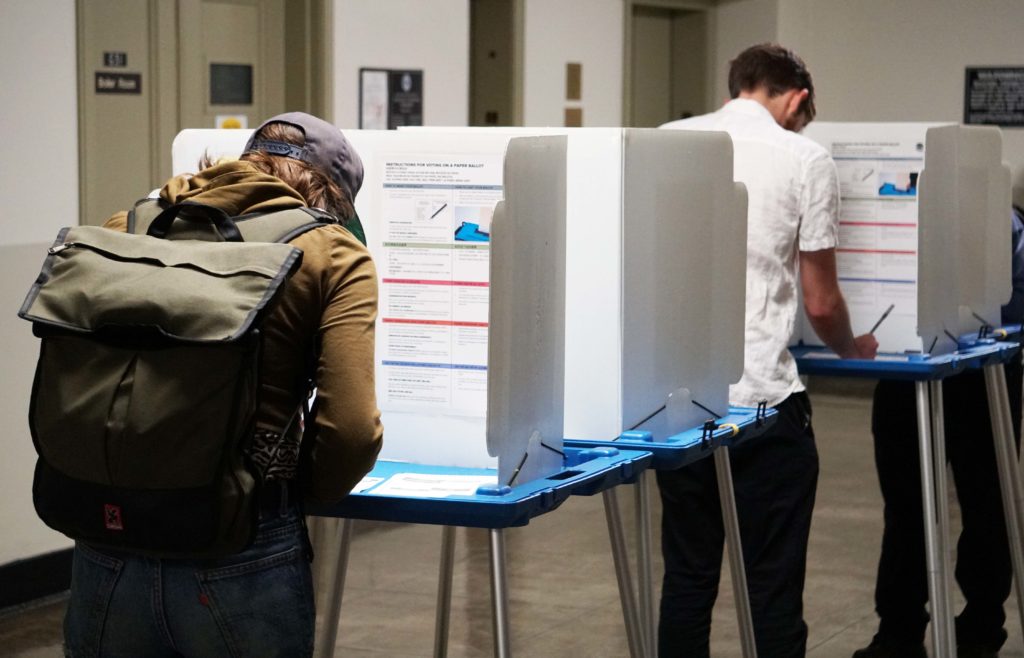As Californians gear up for elections that have the potential to shape the lives of young people in fundamental ways, a consortium of mostly California foundations have set up a fund to elevate the role of public schools in promoting civic leadership and democratic participation.
It is a key part of what the nearly dozen foundations who are participating in the project are calling the California Thriving Youth Initiative, a multiyear effort “to support the learning, leadership, and well-being of adolescents in California.”
The goal is to “create the conditions for young people, especially students of color, to practice civic engagement and democracy inside and outside public school,” said Kathryn Bradley, director of the Purpose of Education Fund at the Stuart Foundation.
The foundation initiated the effort with a seed investment of $30 million, which will be administered by the Los Angeles-based California Community Foundation,
“Nothing is more important than young people participating in and improving our democracy,” said Jesse Hahnel of the Crankstart Foundation, one of the other foundations participating in the initiative.
Even though young people will be affected by government policies for longer than any other age group — and thus arguably have more of a stake in election outcomes than any other age group — they have historically lagged behind in their voting patterns.
In the 2020 elections, for example, 47% of 18- to 24-year-olds voted in California, compared with 67% of voters 65 and older.
The good news is that, in recent years, more and more of them are casting ballots. Just a decade before, a mere 18% of eligible 18– to 24-year-olds voted in the national elections.
The Stuart Foundation’s Bradley says there is a need to think about civic education more broadly than just traditional civics or American government classes.
Students, she said, need opportunities for civic engagement that “allow them to practice democracy right now.”
To that end, a range of promising approaches have emerged in recent years, which the initiative hopes to build on. Since 2020, for example, California students have been able to earn a “State Seal of Civic Engagement” that is affixed to their high school diploma. It is now one of a half-dozen states offering a similar certification.
To be awarded the seal, students must demonstrate “excellence in civic education,” which includes completing a civic engagement project of some kind, in addition to completing courses in history, government and civics.
Encouragingly, the number of seals has more than doubled to nearly 13,000 in 2022-23. But these represent just over 2% of California’s nearly 400,000 students who graduate each year, and so far, only a small proportion of California high schools are participating in the program.
Debunking stereotypes that today’s generation isn’t overly interested in community engagement, a recent national survey by the nonprofit YouthTruth showed that 60% of high school students “want to help others and work across differences to improve society.” But it also found that fewer than half said they had learned the necessary skills in school in order to do so.
What’s more, civic participation varied by parents’ education levels and students’ racial or ethnic background. “Those with parents holding advanced degrees stand out as most civically prepared, while Latino students are significantly less civically empowered than other racial groups,” the survey found.
Schools have a central role to play in changing that, and Bradley points to numerous examples in California where schools are engaging students from all backgrounds in civic education projects.
At the most recent annual Civics Day in Long Beach Unified, students described how they had successfully worked to get trash cans placed at their local beach. Students had to contact the local Public Works Department, which involved sending emails and making phone calls. “They were able to identify the levers of change in their community, and the people of influence that they needed to reach,” Bradley said.
At Oakland High, a goal of the Law and Justice Pathway Students is to help “students become active participants in advocating for positive social change in their community.” In Mallory Logan’s social studies class, students have researched homelessness in their school and district and had an impact on the district’s staffing patterns to assist unhoused students.
As part of Project Soapbox, organized by the decades-old Mikva Challenge, students in the Anaheim Union High School District issue calls to action on topics such as the death penalty, gun laws and college tuition. It is just one of numerous civic education initiatives underway in Orange County schools.
“These initiatives show that young people do have strong civic dispositions, that they want to help others, they want to work across lines of difference,” said Bradley. “They just need more opportunities within their schools and within their core content coursework to do it.”
In addition to promoting civic engagement, the foundation partnership is also launching a “Youth Thriving Through Learning Fund,” which will support initiatives to help adolescents in California “actively pursue their goals for careers, work and civic life.”
“Today’s students are building the communities we will all live in together in the future,” said Kent McGuire of the Hewlett Foundation, one of the partnering foundations. “In this critical moment, when our public institutions are under attack, we need to do everything we can to support them.”
Four foundations involved with this initiative — the Stuart Foundation, the Hewlett Foundation, the College Futures Foundation, and the McClatchy Foundation — are among over 20 foundations providing support to EdSource. EdSource maintains full control of its editorial content.

